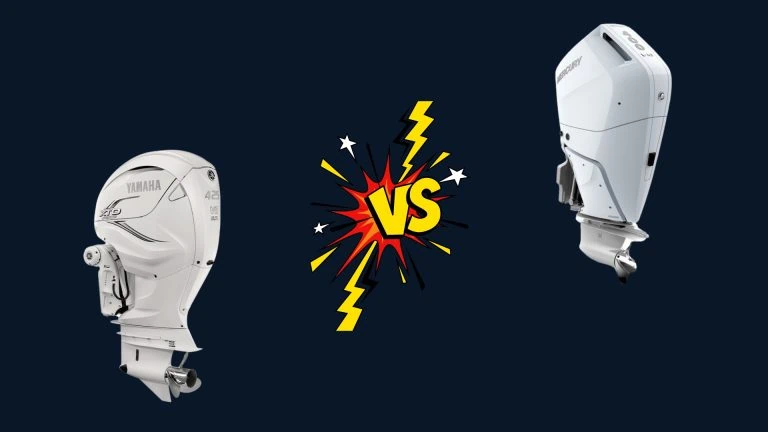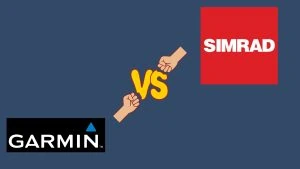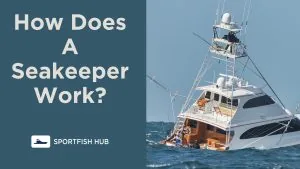So you’re looking to buy a new outboard motor for your boat and trying to decide between two of the top brands – Yamaha Vs Mercury.
These leading outboard manufacturers have a lot to offer, but also some key differences you’ll want to consider before making your purchase. This comparison review breaks down the pros and cons of Yamaha and Mercury outboards to help you determine the best option for your boating needs.
History and Overview
Yamaha
- Founded in 1955 as a musical instrument company in Japan
- Began producing outboard motors in 1960
- Known for innovation, quality engineering and reliability
- Manufactures motors from 2.5 to 425 horsepower
- Offer portables, mid-range, high thrust, high horsepower, jet drive and electric trolling motors
Mercury
- Founded in 1939 in Wisconsin, USA
- Specializes in marine propulsion systems
- Focuses on lightweight, high performance outboards
- Makes motors from 2.5 to 600 horsepower
- Leading categories are Verado, Pro XS, FourStroke, SeaPro and Jet
Performance and Power
When it comes to speed and acceleration, Mercury tends to have a slight edge.
- Mercury’s Verado and Pro XS motors deliver superior torque and hole shot.
- The 600hp V12 Verado is currently the most powerful production outboard on the market.
- Advanced tech like electro-hydraulic power steering provides smooth, responsive handling.
Yamaha also offers plenty of power and speed.
- The latest XTO Offshore 425 is built for hardcore offshore fishing.
- Mid-range F models like the F90 are quick, efficient and reliable.
- Yamaha engines are a bit heavier than Mercury’s lightweight models.
| Yamaha | Mercury |
|---|---|
| 2.5 – 425 HP range | 2.5 – 600 HP range |
| XTO Offshore 425 HP | 600 HP V12 Verado flagship model |
| F25 – F350 models | Verado, Pro XS, FourStroke models |
Fuel Efficiency
Fuel economy is an important consideration for most boaters. Here’s how Yamaha and Mercury compare:
- Mercury’s new V6 and V8 motors with 3.4L and 4.6L displacements are engineered for improved efficiency, allowing operation on 87 octane fuel.
- Yamaha’s SHO series utilizes a high pressure direct injection system to optimize gas mileage.
- At cruising speed, there is little noticeable difference in fuel consumption between these brands.
- At wide open throttle, Mercury may have a slight advantage.
Features and Technology
Mercury tends to lead in technological innovations:
- Advanced Range Optimization (ARO) and adaptive speed control
- Joystick piloting and Skyhook digital anchoring
- Active Trim and computer-controlled trim/tilt
- VesselView displays with smart tow and cruising features
Yamaha also integrates helpful features:
- SetPointTM technology for helm master control
- Variable trolling RPM and cruise control
- Digital networks like Helm Master® EX and CL7 Display -SHO engines with drive-by-wire throttle and shift
| Yamaha | Mercury |
|---|---|
| SetPoint helm control | Joystick piloting |
| Cruise control | Active Trim & auto trim/tilt |
| CL7 display | VesselView multi-function displays |
| Drive-by-wire throttle | Advanced Range Optimization (ARO) |
Reliability Reputation
- Yamaha is renowned for reliability and durability, with some of the lowest warranty claim rates in the industry.
- Mercury had some challenges with early Ficht fuel injection models but has since rebounded with excellent reliability on current FourStroke and Verado motors.
- Both brands now manufacture motors with exceptional quality control and rigorous testing.
- For saltwater fishing, Mercury’s SeaPro models feature durable corrosion-resistant alloys.
Maintenance and Service
- Yamaha provides a strong 5 year limited warranty on new motors. An extensive dealer network makes service accessible.
- Mercury offers factory-backed 3 year limited coverage that can be extended to 5 or 8 years. Certified technicians handle maintenance.
- Yamaha maintenance costs may be marginally lower over the motor’s lifespan.
- DIY maintenance kits are available from both companies.
Cost Comparison
When it comes to MSRP, here’s how Yamaha and Mercury pricing shakes out:
- Small portables start around $1,500-$2,000 for both.
- Mid-range outboards (60-150 HP) run $9,000-$16,000 for Yamaha and $10,000-$18,000 for Mercury.
- At the high end, Yamaha’s XTO 425 is around $73,000 while Mercury’s 600 HP Verado retails over $100k.
While base prices are similar, real world costs depend on special promotions and options. Overall, Mercury offers a wider range of engine types and more cutting-edge technology. Yamaha provides time-tested reliability.
The Verdict
For boaters seeking lightweight power and performance, Mercury’s extensive range of high-tech outboards is sure to impress. If reliability is your top criterion, Yamaha’s engines have withstood the test of time. At the end of the day, choosing between Mercury and Yamaha comes down to individual preference. With proper maintenance, both produce excellent results. Consider your boating style, budget and dealer service accessibility – then pick the outboard brand that’s right for you.












